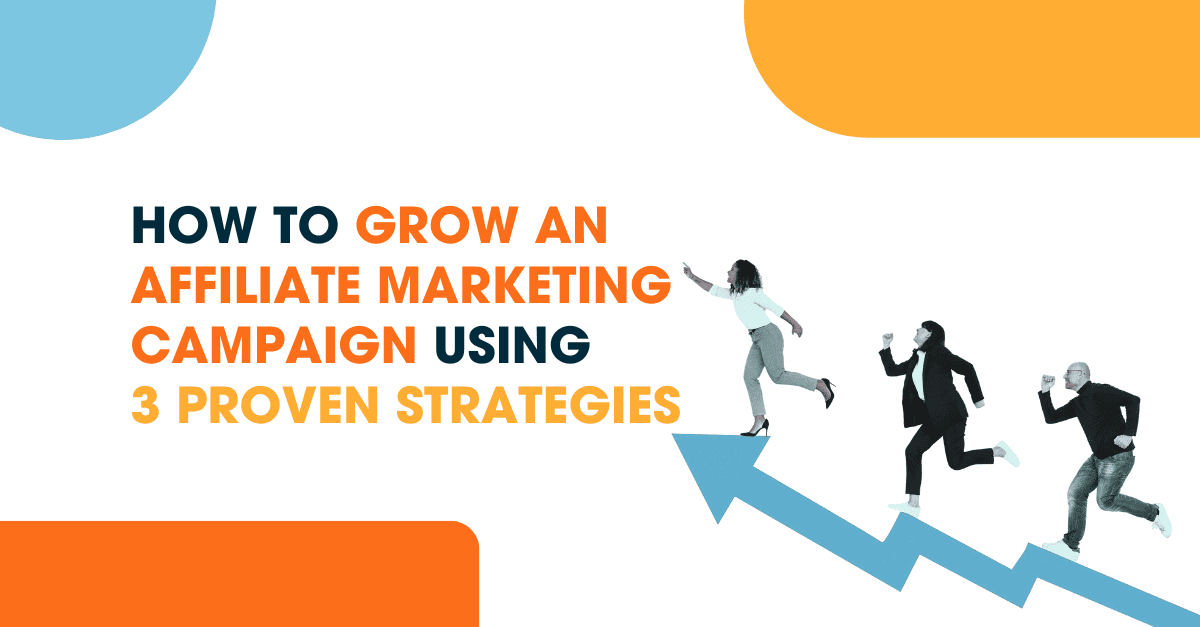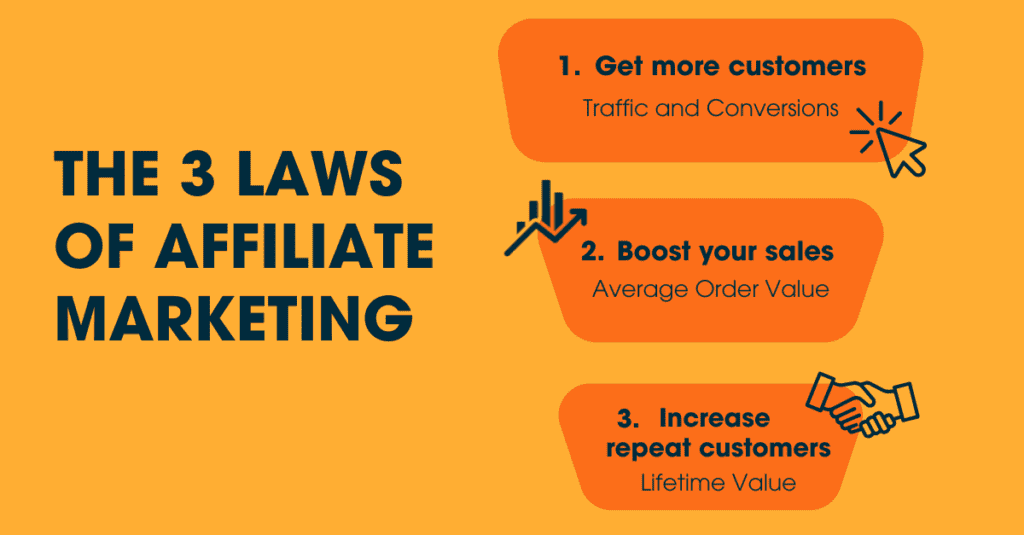
How to Grow an Affiliate Marketing Campaign Using 3 Proven Strategies
A lot of affiliates bounce from one tactic to another, hoping something will work—without ever creating a real, sustainable strategy. But affiliate marketing success isn’t about luck. It’s about treating it like a genuine business, and yes, affiliate marketing is a business.
While there’s no official textbook on scaling affiliate campaigns, core business principles still apply. One of the most impactful frameworks comes from legendary strategist Jay Abraham. His book, “Getting Everything You Can Out of All You’ve Got,” breaks business growth down into three clear steps:
- Get more customers
- Increase how much each customer spends
- Get customers to buy more often
Simple? Absolutely. But the impact is immense—especially when applied consistently.
Let’s break this down using a real-world example outside of affiliate marketing to show how these principles work in action.
Meet James: A Personal Trainer With Big Goals
James loves helping people get in shape. He’s great at training clients, but when it comes to growing his business, he’s not sure where to start.
By applying Abraham’s three growth strategies, here’s how James can scale his business:
1. Growing James’s Client Base
The key to landing more clients? A mix of front-end visibility and back-end conversion tactics.
- Front-end optimization puts James’s training services in front of more people.
- Back-end optimization ensures those leads turn into long-term paying clients.
James already offers a free intro session—a great trust-building tool. But with a tight budget, how does he stretch his efforts for maximum ROI?
Here’s how:
- Turn clients into marketers: James can ask for referrals, but a small tweak—like offering a free session for every successful referral—could skyrocket results. Testing an incentive vs. a simple ask will reveal what works best.
- Ads on the go: A branded car sign turns every drive into local marketing. High visibility, low cost, big impact.
- Fine-tune the close: James currently converts 40% of free sessions into paying clients. Not bad—but with sharper sales skills and a pitch tailored to each client’s goals, he boosts that to 75%. More clients, no extra ad spend.
2. Increase the Average Transaction Value:
James charges by the hour, but like many up-and-coming fitness pros, he’s ready to raise his rates. The challenge? He doesn’t yet have the brand recognition or client roster to confidently command premium pricing.
Here’s the truth: building a trusted, in-demand brand takes time—but that doesn’t mean you have to wait years to earn more.
Long-term moves that build real value:
- Train high-profile clients (even one can elevate your status)
- Show off your expertise and progress on social media
- Sharpen your own physical transformation—it speaks volumes
Collect real testimonials to boost credibility
In the short term, there’s a smarter path: niche down and productize your offer.
Instead of just “personal training,” James could launch a high-impact, time-limited program—like a “6-Week Summer Fat Burn Camp” or a “Postpartum Weight Loss Plan” tailored to new moms. These targeted programs feel more exclusive and allow for premium pricing right away.
By combining a clear focus with results-driven branding, James positions himself as an expert—without needing years of experience. It’s not just about raising prices. It’s about raising perceived value.
3. Increasing the Frequency of Transactions:
James is focused on building long-term client relationships—not just booking one-off sessions. That mindset is key. Studies show it’s far more cost-effective to retain clients than to constantly chase new ones.
Right now, he’s running everything manually through Excel. While that may have worked early on, it’s time to level up. By setting up simple systems and using automation tools, James can save hours each week and stay focused on what he does best—coaching.
Retention isn’t just about keeping clients; it’s about understanding why they leave. If someone drops off, that’s a chance to reconnect. Maybe the workouts felt overwhelming—James can reach out, listen, and tweak the plan to better match their pace.
The goal? Create an experience that keeps clients engaged, supported, and coming back. With the right tools and mindset, James can turn short-term signups into long-term success.
Applying the 3 Laws to Affiliate Marketing:

Most affiliates focus on scattered tactics but miss the bigger picture—a solid strategy. Here’s how applying these three core principles can turn your affiliate campaigns into consistent, scalable winners:
1. How do I acquire more customers for a campaign?
Just like before, we can break this into two key focus areas:
Front-end optimization is all about driving more clicks. Proven strategies include testing new countries, ad placements, traffic sources, formats, and experimenting with different bidding models.
One of the fastest ways to boost results? Increase your ad click-through rate (CTR). A stronger CTR means more clicks without raising your spend.
But clicks alone don’t pay the bills—back-end optimization turns those clicks into real customers. This means fine-tuning your landing pages, sharpening your ad messaging, and dialing in your targeting.
The goal? Higher conversion rates and better ROI from every visitor.
2. How do I increase the average transaction value?

If you’re earning a fixed commission per lead or sale, there are smart ways to boost that payout:
- A) Talk to your affiliate manager about raising your rate: If that’s a no-go, compare other networks or reach out to the brand directly for a better deal. A little negotiation can go a long way.
- B) Promote more than one offer: Affiliates often stack complementary products or create comparison pages that review similar deals. This gives users more options—and you more chances to earn from each visit.
3. How do I increase the frequency that the average customer buys from me?
While this law may not directly apply to traditional affiliate marketing—where customer data is often limited—it still holds valuable lessons.
One smart move is building an email list. This lets you stay in touch with users and promote multiple offers over time, increasing lifetime value.
Another proven tactic is retargeting. When someone clicks but doesn’t convert, you can reach them again with tailored retargeting ads. It’s a cost-efficient way to boost conversions and squeeze more ROI from your traffic.
Conclusion:
You’ll notice a clear pattern across industries—certain growth strategies just work. Jay Abraham’s framework is one of those timeless tools. It’s not just theory—it’s a proven approach to scaling smart, and this guide showed how to put it into action with real, relatable examples.
